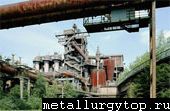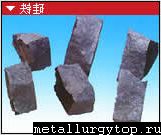Insights Into the Minneapolis Bridge Collapse
 The incredible collapse of the Minneapolis bridge will send a message to the nation that has been repeatedly sent for decades, but that our political system has refused to effectively respond to. America's physical, engineered infrastructure has been in desperate need for massive spending to repair and replace, but the multi–trillion–dollar cost has been rejected by local, state and federal politicians.
The incredible collapse of the Minneapolis bridge will send a message to the nation that has been repeatedly sent for decades, but that our political system has refused to effectively respond to. America's physical, engineered infrastructure has been in desperate need for massive spending to repair and replace, but the multi–trillion–dollar cost has been rejected by local, state and federal politicians.
We have had bipartisan government neglect. The bridge fell down because our politicians have let us down.
First, understand that I have a professional background in this area. My career started as a metallurgist, than I obtained a Ph.D. in Materials Engineering and became a full professor of metallurgical engineering at the University of Wisconsin, Madison where I taught about mechanical metallurgy and failure analysis, and in my consulting practice regularly worked on explaining actual failures of products and systems.
Many academic and professional groups have for many years produced countless reports on mounting unpaid public costs for updating our crucial physical infrastructure, including bridges, but going way beyond those to, for example, roads, water and sewer systems, tunnels and much more. Make no mistake: The deeply researched and totally supported case for a massive national infrastructure spending program could not have been clearer. For example, in an excellent essay It's Time to Rebuild America, Felix G. Rohatyn and Warren Rudman wrote about the national crisis.
But spending on infrastructure is not sexy and politicians at ALL levels of government have found countless excuses for not facing the totality of the problem. Instead, public spending is dribbled out, dealing with the most urgent problems or, worse yet, the ones that are the most visible to the public. But unaddressed are massive numbers of problems, such as the Minneapolis bridge and thousands more bridges, that our bureaucratic system has learned to game, postpone, rationalize and, therefore, put the public safety at considerable risk.
As a metallurgist I can pretty much assure you that if there is a technically honest and complete investigation, the ultimate explanation of the Minneapolis bridge failure will be related to fatigue cracking in the metal structure. Already, news reports have revealed some prior observation of a fatigue problem with the bridge and that the bridge had a relatively low rating of four out of a possible nine, showing that it was structurally deficient. The game played by virtually all government agencies is to find excuses for delaying the most costly repair or replacement of bridges and other parts of our physical infrastructure. As just another example, in most older urban areas there are constant repairs of busted underground water pipes. What is really needed, but avoided, is a total replacement of very old underground pipe systems – in many places 100 or more years old!
Government inspection programs have been terribly compromised over many years. The incredible political pressures to minimize spending on infrastructure have filtered down to the people, procedures and technologies used to examine bridges and other things. When it comes to bridges it is also important to admit that many aspects of our automobile addiction have raised risks, including enormously greater numbers of vehicles creating heavy traffic during much of the day in urban regions. Add to this the massive increase in vehicle weight resulting from the incredible increase in monster SUVs, as well as huge increases in large truck traffic.
The Minneapolis bridge collapse happened during evening rush hour because that was a period of maximum stress, and that would be the trigger for expanding existing fatigue cracks. Once fatigue cracks get to critical sizes they grow and propagate very rapidly, producing powerful loads and stresses on remaining steel components and creating what appears to be a virtually instantaneous bridge collapse.
What should be the focus of government and public attention is the various inadequacies of bridge inspections. Were the very best metal analysis technologies used, rather than reliance on visual observations? Were the inspectors the very best educated and trained? Were inspections constrained by federal or state regulations and guidelines so that best available methods and technologies were not (justifiably) used? Here is the big point: The fact that this bridge fell down is proof positive that the entire inspection and maintenance program was a FAILURE! The central goal and responsibility of engineering practices is to protect the public and PREVENT deaths.
Can responsibility also be assigned to the design of the bridge? Yes, to some extent. The design was the opposite of "fail–safe." If any key bridge structure component failed, then the entire bridge was doomed to fail. And perhaps it can be reasonably argued that at the time of the original design, that this feature was accepted practice. However, we must understand that if cost constraints had not been imposed, designers could probably have built in various redundancies so that only portions of the bridge would have failed under the most catastrophic scenarios.
Here is yet another big issue that I have not seen mentioned or discussed by anyone yet. I can absolutely guarantee that there were countless discussions over the years by engineers, bureaucrats and politicians that combined risk assessment and cost–benefit types of thinking. It comes down to this: To bite the bullet and conclude that to provide maximum protection of public safety the bridge should be replaced would inevitably face debates about the incredibly high costs and the enormous difficulties of obtaining the funding, and also how obtaining such funding would imperil other government projects.
So the decision moves in the direction of higher levels of inspection to postpone the inevitable high cost/low risk scenario. On the other hand, all people connected to these kinds of discussions know one big reality: If the crap hits the fan and there really is a catastrophic bridge failure, then the money WILL be readily available to replace it! This is the way the system works. Of course, to replace the bridge and deal with all the many horrific impacts of the bridge failure AFTER the fact will cost much, much more money than if a planned replacement strategy had been adopted!. But that is exactly what the Minneapolis story ultimately is all about. It is what virtually all of our national infrastructure thinking is about. The New Orleans disaster was totally preventable, as every technically sound and objective analysis showed.
As time goes on and our national physical infrastructure continues to degrade from many causes, including corrosion, fatigue and inevitable wear and tear, we will continue to see deaths, injuries and incredible economic harm. And, yes, global warming and all of its anticipated climatic changes will just increase the risks of catastrophic infrastructure failures. As just one example, sea level rise is known in some quarters to put in jeopardy virtually every major American city that sits on or close to a major water body. Ultimately, our biggest infrastructure investment will be for constructing massive, complicated dikes and walls, as the Dutch have done, to protect our major coastal cities.
The remaining public policy question is clear: Will the nation spend what is necessary? Seven other major bridge collapses in the last 40 years have not done the trick. Inadequate bridge inspection has been a frequent documented problem, as well as some design defects. Many people have already died from bridge failures. But still the nation's elected officials have not bitten the bullet and agreed to spend trillions of dollars over several decades to bring America's physical infrastructure up to the most modern standards. Waiting for politicians to make physical infrastructure a priority is like waiting for Godot.





Build Your Own HHO Generator!
 As gas prices continue to rise worldwide, people everywhere are suffering from the effects. Some people are even having to sell their favorite cars for more fuel efficient models, or canceling vacation plans because they can't afford the gas. Some people, however, are finding a solution that literally 'falls from the sky'. HHO.
As gas prices continue to rise worldwide, people everywhere are suffering from the effects. Some people are even having to sell their favorite cars for more fuel efficient models, or canceling vacation plans because they can't afford the gas. Some people, however, are finding a solution that literally 'falls from the sky'. HHO.
HHO water fuel is a hydrogen/oxygen gas that is derived from water and can be used as fuel in engines. As a matter of fact, HHO fuel from water has been used in torches, lamps, and metallurgy ovens since the early 1900's. HHO (water fuel), also known as Brown's Gas or Rhode's gas, has been shown to increase fuel economy by up to 40% when used in conjunction with gasoline in standard internal combustion engines.
HHO is generated from plain water through a simple process called electrolysis. That is just a fancy word for running a current of electricity through water. As the current is distributed throughout the water, the hydrogen and oxygen begin to separate and form gas, it then bubbles to the top of the water where it is sucked into the engine via tubing connected to the air intake of your car.
There aren't any commercial hydrogen gas saver units that you can buy, mainly due to the fact that the tens of thousand of people using these are simply building the generators themselves. In fact, you can build your own hydrogen gas saver using standard, inexpensive parts from the hardware store. Your shopping list should include some type of water reservoir, some wiring to run the current through the water, tubing for the HHO (water fuel) to travel though, and whatever you might need to mount it to the vehicle (zip ties, nuts/bolts, brackets, any way you can think of).
Never Built Anything Like This Before?
Hey that's alright! Most people running these had never built one before either. If you're still a little fuzzy on how this works or how to build it, I highly suggest following one of the many guides that show you step–by–step, start–to–finish exactly how to build and install your own hydrogen gas saver. For your convenience, I've reviewed the Top 3 Guides available so you can decide which best fits your individual needs and budget.
Bruce Brennan is an expert in Fuel Economics and enjoys helping people just like you save gas every day. For more information including reviews, product comparisons, and fuel saving tips, visit his website: Hydrogen Gas Savers





Dry Film Lubricants - More Than Just Low Friction Coatings
 Dry film lubricants are much more than low friction coatings. That's right. They can be used for metal wear protection, too. Especially when surface contact is severe and localized. Ironically, this is the time when lubrication, not hardness alone, is key.
Dry film lubricants are much more than low friction coatings. That's right. They can be used for metal wear protection, too. Especially when surface contact is severe and localized. Ironically, this is the time when lubrication, not hardness alone, is key.
Does your surface condition fall within these types of wear or contributing factors?
Wear Adhesion –– visible by fretting, pits, holes or scales transfer, the result of softer materials dislodging from a widened hardness gap between two moving surfaces. Besides a drop in performance, look for visible changes in surface finish, dimensional or geometric distortion.
Wear Abrasion –– witnessed by scratches, grooves, or corrugations, caused by loose abrasive particles torn away from the wear surface. Also look for negative changes in performance, surface finish, dimensional or geometric distortion.
Wear Surface Scarring –– seen by tears or small holes, typically relates to shock or impact, and involves fatigue close to the wearing surface.
Wear 'Tribo' Oxidation –– involves oxidation products from the wearing surface, usually in particulate form. Often harder than their parent metals, surfaces become rough which, in turn, leads to abrasive or adhesive wear.
Dry film lubricants may be just right for you.
What are dry film lubricants? See them as solids used between two surfaces in relative motion, for the purpose of reducing wear, lowering friction.
Known also as solid films, they're best often utilized in extreme environments, such as very high temperature or extreme pressure, where organic–based compounds would degrade or 'cold–flow' and never survive.
Examples of frequently applied compounds include graphite, tungsten disulfide (WS2), and molybdenum disulfide (MoS2). Their material characteristics work similarly, in that each exhibits high ductile shear under an applied tangential force.
Imagine a series of vertically stacked plates (called basal planes) supported by long, wobbly legs (weak Van der Waals forces). Under an applied lateral force, the legs 'collapse'. Severe plastic flow occurs. The plates shift out of place. Yet strong ionic bonds force the shear parallel with the basal planes, perpendicular to the crystal structure, their preferred orientation.
Want to prevent wear? Then reduce your metal–to–metal contact. Be sure the lubricating system is comparatively softer than the bearing material to avoid abrasive wear. Know the service temperature of your environment and heat stability of your lubricant.
Machinery offers excellent areas for application. As do cutting tools, dies, and forming tools. Gears, too, where contact stress is high and plastic deformation (of the parent metal) likely.
Industrial lubricants may be applied in a variety of ways. From basic immersion, spray, brush, dip, burnish, impact or impingement, to sputtering and heat fusion alloys. Generally, they are applied in pure thin films (less than 0.0001 inch). Or, as resin–bonded systems whose thickness is typically 0.0002 inch or greater, using binders such as epoxy, phenolic, or ceramic. Other forms of application include plasma sprays (.003 inch and higher), where lubricating solids are interspersed in a wear resistant matrix. For internal surfaces beyond line of sight, outside the practical PV limit of co–deposited plating, the use of self–lubricating powder metallurgy composites may be preferred.
Which surface should be coated? Consider one side, or both. For a hard/soft bearing system, coating the softer of the two surfaces will extend the life of the system. However, the harder a substrate, the more effective the dry film lubricants will perform.
Generally, friction will be slightly higher coating both surfaces, rather than coating one surface only. But wear life will increase coating both surfaces. So, while differences may be negligible in your application, you may have to determine whether longer wear life or better performance is best.
Today, there are some exceptionally high performance products available for adverse conditions. Some perform in temperatures ranging from cryogenic to ultra high (1100 degrees Celsius). Others are compatible with liquid oxygen, perform in hard vacuum, resist high frequency fretting wear, and loads up to 250,000 psi.
So, what are the makings of a good, wear–resistant coating? Next time, take a serious look at dry film lubricants.
Want more information? Need help with your surface engineering? We care! Just visit us at:




